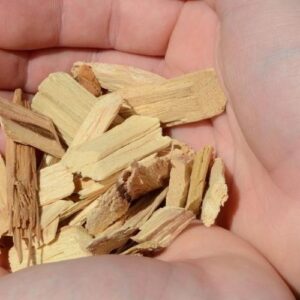
Part of living in the Anthem and Phoenix areas is enjoying the unique variety of native plants. Of course, the most easily recognizable desert plants are different kinds of cactus, including the iconic saguaro (Carnegiea gigantea).
including the iconic saguaro (Carnegiea gigantea).
The saguaro’s tall stature and curved arms make it stand out, and the flowers it produces in the late spring and summer months are our state flower for a reason! If you’re lucky enough to have them on your property, you know that they need different care than your trees or flowers.
Here are some things you may not know about the saguaro cactus:
- Not all of them grow arms.
- If well cared-for, they can live 150-200 years or more.
- Saguaros have quite the system for getting water – they have one deep taproot that can extend into the ground about 3-5 feet deep, but the rest of the roots are only 4-6 inches into the ground so they are able to absorb rainwater.
- When fully hydrated, saguaros can weigh 3,200-4,800 lbs.
- A saguaro once killed a man in “self-defense.” Yes, really. A man was shooting at a saguaro with a shotgun, causing one of its arms to break off and fall, crushing him (Also, don’t shoot at saguaros. They’re protected).
- Saguaros only grow about a foot every 10 years.
- A ten-year-old saguaro may still be only an inch and a half tall! They are incredibly slow growers, particularly when young. This is one of the reasons they are so strictly protected by the state.
- Those that do grow arms (branches) will begin to grow them at about 40-80 years of age or when they’re around 12 feet tall.
- Saguaro growing in the home landscape, particularly one that receives supplemental irrigation, tend to put out arms at a younger age than those in the wild.
- The ridges or pleats on a saguaro have many purposes. They allow the cactus to expand (up to 20-25%) so they can take in water, they provide shade for the cactus, and they act as a windbreak, allowing the saguaro to remain tall during after strong winds.
- Some saguaros develop a strange fan-like structure at the top instead of the arms we’re used to seeing. These rare, crested forms are highly prized.
- Saguaro cacti are heavily regulated by the state, so be careful before you move one, destroy one, dig one up, or add one to your property. You may need a tag, a permit, or to pay a fee. Learn more about protected Arizona Native Plants from the Arizona Department of Agriculture.
- If you buy a saguaro, be sure it’s not “hot”! Make sure the seller has a tag/permit (if you don’t see it attached to the plant, ask to see it before buying). If not, the saguaro may be stolen (often, they’re dug up on public land or abandoned properties) and you could be responsible for hefty fines if you purchase it.
- Because saguaro are so heavy, it’s best to hire a professional to move and plant it for you. There are companies that specialize in doing that. And if a larger one breaks, drops an arm, or falls over, you’ll also need a professional to remove the pieces. Not only are the pieces heavy, they’re covered in armor-piercing thorns!
- When a saguaro is planted, it should face the same direction as before (often this is marked before it is uprooted). As with many Arizona cacti, the saguaro’s hide is 15% thicker on the south-facing side, protecting it from our harsh sun. If replanted facing another direction, the saguaro will suffer from sunburn.
- The Arizona state flower is the saguaro bloom, which usually appears in late spring through early summer. The flowers open during the night and last until only the following afternoon, so there’s a limited time for pollinators to get to the flowers.
- Saguaros rarely need to be watered and should survive on rainfall alone. If they receive too much water, they can rot and fall over.
- Various types of animals nest in saguaros, which is why so many have holes. One of the most common birds that nest in saguaro is the Gila woodpecker. It carves out a cavity shaped somewhat like a boot but waits until the walls of the cavity dry before moving in.
- While many people have tried to plant/grow saguaros elsewhere, they only grow in the Sonoran desert.
- The saguaro cactus is named after Andrew Carnegie (the scientific name is Carnegiea gigantea).
For more on buying/selling/moving saguaros, see this article.
For an interesting and more detailed read about saguaros from a fellow Phoenician, check out this post.
See Our Latest Articles
More Articles Like This

Titan Tree Care is a full-service tree care company located in Anthem, AZ and serving all of North Phoenix. We offer a wide range of services to meet your tree care needs, including tree and palm trimming, tree pruning, tree removal, stump grinding, and more. We also offer insect or disease treatments and fertilization services. We are dedicated to providing high-quality, safe, and effective tree care services to our customers and work hard to ensure that your trees are healthy and look their best.









